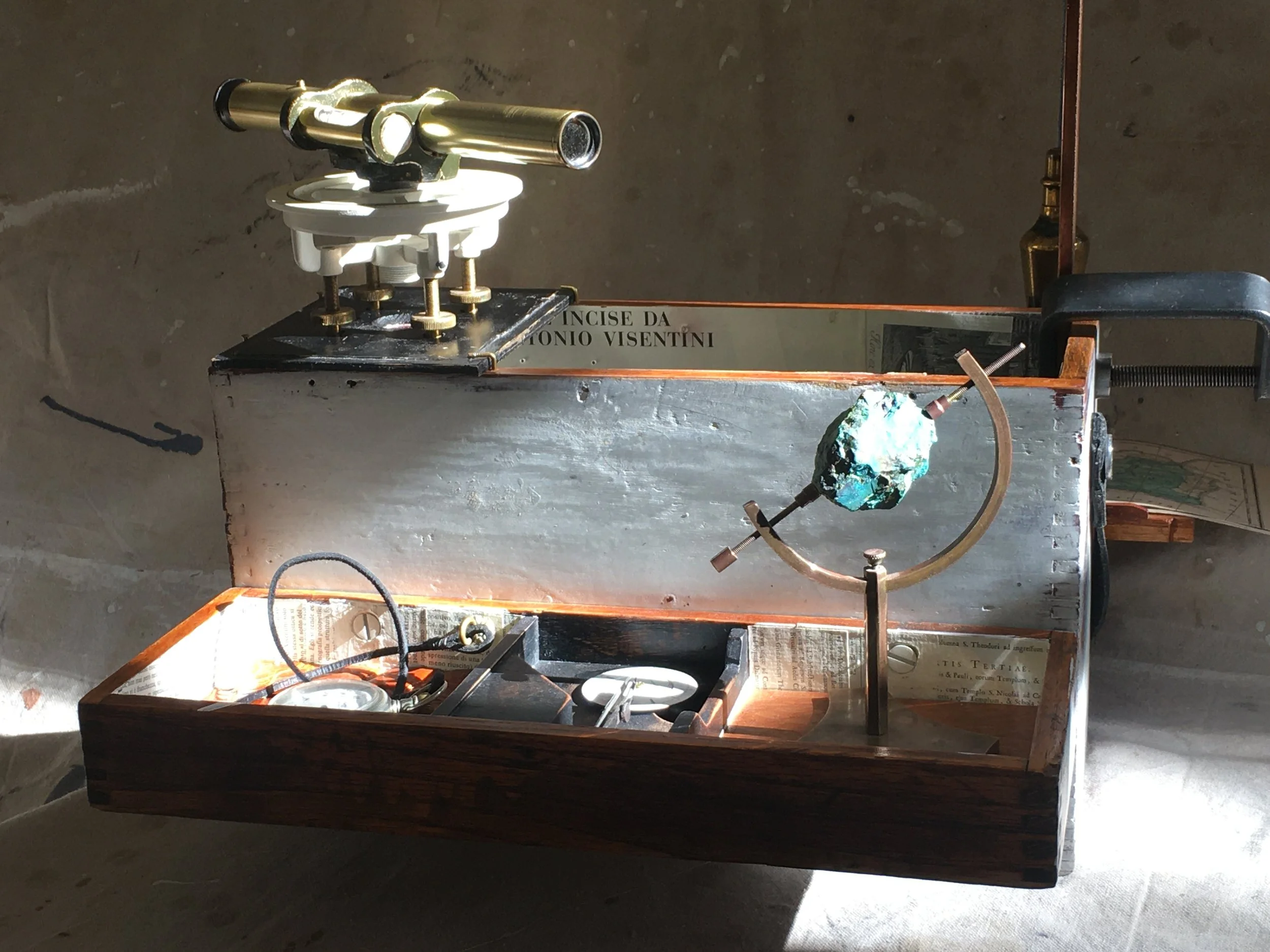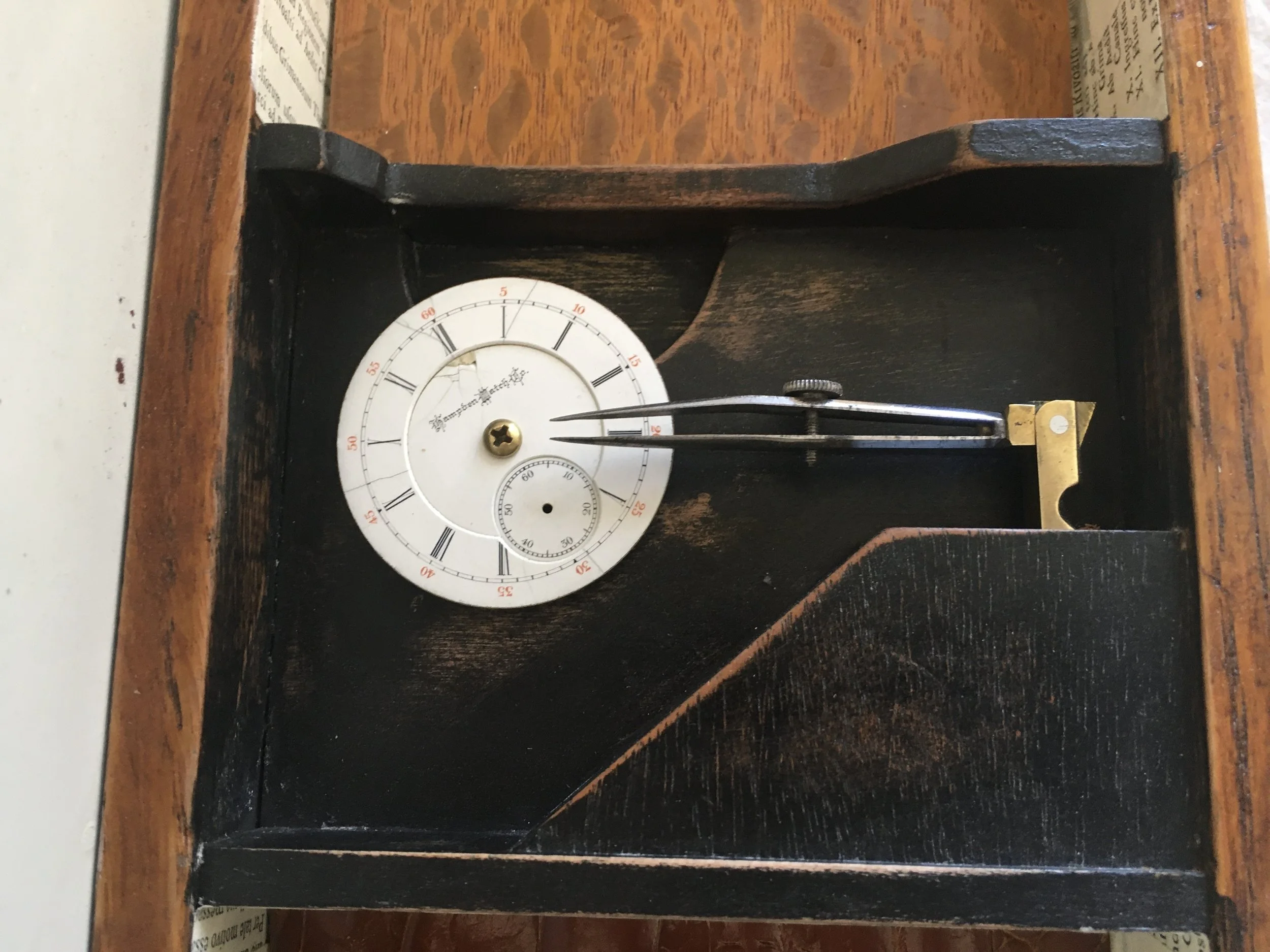






Paul baker constructed sculptures san francisco
Title: Beauchamp 431 1/2
Year: 2020
Dimensions: 20” wide x 32” high x 20” deep
We already know Beauchamp invented the selfie in 1894 with his Copper Camera. Another of his prescient innovations is the ability to tag photos with a time and location stamp.
A surveyors transit, pendulum (pin-pointing a map), and geological samples establish place; dials and an hour glass set the time. The sturdy wood carry-case includes brass handles so you can lash it to your camel in the morning.
Title: Beauchamp 431 1/2
Year: 2020
Dimensions: 20” wide x 32” high x 20” deep
We already know Beauchamp invented the selfie in 1894 with his Copper Camera. Another of his prescient innovations is the ability to tag photos with a time and location stamp.
A surveyors transit, pendulum (pin-pointing a map), and geological samples establish place; dials and an hour glass set the time. The sturdy wood carry-case includes brass handles so you can lash it to your camel in the morning.
Beauchamp built this device to set up and break down quickly; here it’s ready for a day’s work photographing ruins.
His trunk is numbered 431 on top; since this is an accessory to accompany that, its name is 431 1/2, as the French use bis in an address.
Beauchamp employs three methods for each data stamp—allowing him to triangulate in place and time. Place: pendulum (as often used in dowsing), surveyor’s transit, geological sample. Time: hourglass, pocket watch, and precision dial.
Vintage drafting equipment and a pocket watch face let you dial in the time quite precisely; this information is then transferred to the photograph. We note Beauchamp anticipated today’s time and location photo stamping by 125 years.
A surveyors transit lets you define your location (and that of the photographs) very accurately; he painted it white to resist desert heat.
There’s nothing like a sample of the ground you’re standing on to help pinpoint where you are. 431 1/2 has a compartment where these can be stored if needed later.
As the rock’s information is transferred and stored, there are only two points of contact; this ensures optimum 3-D scanning with the rather crude equipment Beauchamp invented in 1893.